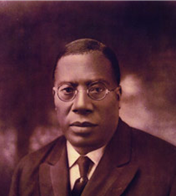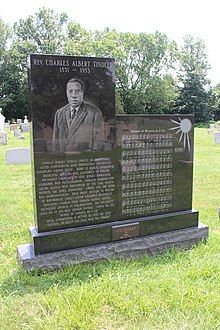Hymn History: Nothing Between My Soul and the Savior & Author: Charles Albert Tindley
“To this day, Charles Albert Tindley is considered a ‘prince of preachers,’ poet, writer, theologian, social activist, and ‘father of African American Hymnody.’ Scholars C. Eric Lincoln and Lawrence H. Mamiya say that his hymns were ‘not simply other-worldly. [These hymns] are also addressed to helping the oppressed survive this world.’”
(Keisha Valentina)
The Origin of the Hymn “Nothing Between My Soul and the Savior”
Among the many hymns that call believers to a life of holiness and intimate fellowship with God, few are as searching and personal as “Nothing Between My Soul and the Savior.” Written in 1900 by Charles Albert Tindley (1851–1933), one of America’s foremost African American hymnwriters and preachers, this hymn continues to inspire Christians to guard their hearts and maintain a clear relationship with Christ. Its message of spiritual sincerity and consecration has transcended generations, denominational lines, and cultural boundaries.
The Hymnwriter: Charles Albert Tindley
Charles A. Tindley was born in Berlin, Maryland, the son of a slave father and a free mother. Though he grew up in poverty and had little formal education, his determination and faith in God led him to become one of the most respected ministers and gospel hymnwriters of his time. After teaching himself to read and write, Tindley eventually entered the ministry and became pastor of Bainbridge Street Methodist Episcopal Church in Philadelphia, which later became known as Tindley Temple in his honor.
Tindley’s sermons were known for their power, sincerity, and relevance to the struggles of his congregation — many of whom were poor or newly arrived in northern cities during the early 20th century. His hymns flowed naturally from his preaching, expressing deep theological truths in simple, heartfelt language. He wrote both the words and music to most of his songs, often while reflecting on Scripture and prayer.
Among his many well-known hymns are “Stand by Me,” “We’ll Understand It Better By and By,” “Leave It There,” and “Beams of Heaven (As I Go).” Each one testifies to his profound faith in Christ’s sustaining power amid life’s challenges. “Nothing Between My Soul and the Savior” holds a special place among them for its quiet introspection and call to personal holiness.
The Inspiration Behind the Hymn
Tindley wrote “Nothing Between My Soul and the Savior” around 1900, during a period of reflection on his own walk with God. He often preached about the dangers of allowing worldly distractions or sin to hinder one’s fellowship with Christ. The hymn was born out of his desire to live in complete spiritual harmony with the Savior and to help his congregation do the same.
The central idea of the hymn comes from Romans 8:38–39, which declares that nothing can separate believers from the love of God in Christ Jesus. Yet Tindley recognized that believers sometimes allow voluntary separations — sins, pride, worldly desires — to come between their souls and the Lord. The hymn was thus a personal prayer, asking God to help him stay faithful and undistracted.
The first verse captures this spirit of devotion:
Nothing between my soul and the Savior,
Naught of this world’s delusive dream;
I have renounced all sinful pleasure,
Jesus is mine, there’s nothing between.
It is both confession and commitment — an affirmation that no worldly pursuit is worth the loss of spiritual communion.
Musical Style and Composition
Tindley’s musical style combined elements of traditional Methodist hymnody with early African American gospel rhythm and expression. His melodies were often simple but deeply emotional, designed to be sung easily by congregations. The tune for “Nothing Between” reflects this pattern: gentle, steady, and prayerful. Its structure allows singers to linger on the words, encouraging reflection on their meaning.
As with many of Tindley’s songs, the music serves the message. The hymn is not meant to excite but to invite. It encourages quiet self-examination — a reminder that faithfulness is sustained not by outward emotion but by inward devotion.
Publication and Spread
“Nothing Between My Soul and the Savior” was first published in one of Tindley’s early hymn collections, Soul Echoes (1900). These collections were sold for small sums to help fund his church ministries, and they quickly gained popularity among both Black and white congregations across the United States.
By the 1920s, the hymn had been adopted into several major denominational hymnals. Evangelists and gospel singers, particularly those in the Methodist and Holiness traditions, embraced it for its emphasis on sanctification and personal holiness. Its appeal lay in its universal message — a call for every believer to examine the state of their heart before God.
The Message and Meaning
At its heart, “Nothing Between My Soul and the Savior” is a hymn of consecration. It urges believers to remove anything that might cloud their relationship with Christ — whether pride, materialism, or worldly ambition. Tindley understood that spiritual life requires continual self-examination and renewal, and he gave his congregation a song that could be sung as both prayer and testimony.
The refrain reinforces the believer’s resolve:
Nothing between my soul and the Savior,
So that His blessed face may be seen;
Nothing preventing the least of His favor,
Keep the way clear! Let nothing between.
This refrain, sung with conviction, becomes a spiritual exercise in cleansing and recommitment. It reminds believers that maintaining fellowship with God requires vigilance and humility.
Legacy
More than a century after its composition, “Nothing Between My Soul and the Savior” remains a beloved hymn in churches around the world. It has been recorded by gospel artists, choirs, and congregations from many traditions. Its quiet strength and devotional focus continue to speak to hearts yearning for purity and closeness with God.
For Charles A. Tindley, the hymn represented his lifelong pursuit — to live and minister in such a way that nothing, not even hardship or temptation, could come between his soul and his Savior. In that pursuit, he gave the Church one of its most enduring calls to holiness.
Conclusion
“Nothing Between My Soul and the Savior” is more than a hymn; it is a prayer of dedication and purity. Born from the heart of a humble pastor who rose from slavery’s shadow to spiritual leadership, it calls believers to examine their own walk with God. Through its simple yet profound message, Charles A. Tindley reminds us that peace, power, and joy are found only when the soul remains in unbroken fellowship with Christ — when there is truly nothing between.
Related
Sorry, no records were found. Please adjust your search criteria and try again.
Sorry, unable to load the Maps API.

